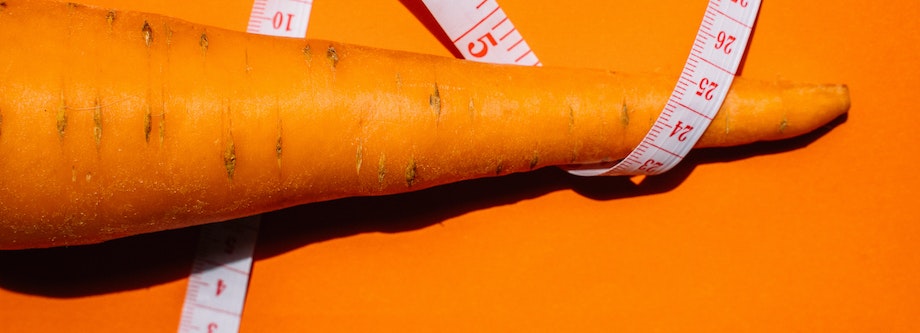What Are Calories And How Are They Measured In Food?
EAT BETTER
Why Do Calories Matter?

Weight loss requires changes to lifestyle, eating habits and mindset. Yet while there’s an amount of psychology to it, it’s also very much a quantifiable numbers game.
You’ll hear us say here, time and again, how losing weight is all about ‘calorie deficit’. How you need to take in fewer calories than you expend. We stand by it, of course. How much, though, do we all know about calories?
Let’s investigate them. Hopefully by understanding calories and finding out how calories are measured, we can paint a clearer picture of the most effective ways to lose any extra weight we may be carrying.
What exactly are calories?
Energy is measured in calorie units. These units are used to measure the quantity of energy in food and beverages.
On most packaged food items, calorie information is included. High numbers of calories are typically found in certain foods, such as those that are fatty, fried or processed.1 Fresh fruit and vegetables, for example, have fewer calories on average than other foods.2
To be able to move about, remain warm, work and think, we require energy, which comes from calories.3 The energy obtained from calories is required for the proper operation of all our systems, even things like our blood circulation and digestion.3
When we eat and drink more calories than we use up, our bodies store the excess as body fat.4 If this continues, over time, we will — very likely — put on weight.4
As a guide, an average man needs around 2,500kcal a day to maintain a healthy body weight.5 For an average woman, that figure is around 2,000kcal a day.5 These values can vary depending on age, size and levels of physical activity, among other factors.5
How calories are calculated
Esteemed scientist Wilbur Atwater calculated the typical calorie content of the three primary sources of food energy — fat, carbs, and protein — all the way back in the 19th century.6
He discovered that whereas proteins and carbohydrates only contain 4 calories per gram, fat has about 9 calories per gram.6 ‘The Atwater System’, often known as ‘The 4-9-4 Method’, is the current method used to compute the calories listed on product labels.6
How do scientists measure a calorie?
How are calories measured? The most common way for food scientists to work out the very specific calorie details of anything is by using a tool called a bomb calorimeter.7
This device accurately determines how much energy a food has. Scientists employ this equipment by sealing the meal in a water-filled container, heating it until the food is entirely burnt off. The increase in water’s temperature is then monitored to calculate the product’s calorie content.7
Are calories exact or measured?
Given the specific numbers you often see attributed to foods and drinks and the technology available to food and drink manufacturers nowadays (namely, the bomb calorimeter), it’s tempting to assume that their calculations are always very scientific and accurate. That’s not necessarily the case.
Many food producers estimate the calorie content instead of doing chemical studies by utilising component values obtained from tables released by His Majesty’s Stationery Office (HMSO).8 These estimations often fall within 10% of the actual number.8
It is possible to determine the calorific value of anything with tests, but as they’re not a legal requirement, very few producers go to such lengths.
So if you’ve ever wondered to yourself, ‘how do they measure calories of food?’ the answer may be ‘not always as precisely as you may imagine.’
How to count calories in food
To keep on top of your calorie intake, you need to count them. Not individually, of course, but keep a tally of your daily calories in, so you know you’re not overeating.
Make sure you read food labels when cooking at home. If you’re eating out, most restaurants now provide calorie information on their menus.
You can work out calories for anything you’re unsure of using online calorie counters. Technology can come in very handy here. There are lots of smartphone apps that help you work out and track your daily calorie intake.
What are ‘empty calories’?
Foods or drinks that have little to no nutritional value are often referred to as providing ’empty calories’. They frequently include excessive levels of fat or sugar. So they may taste nice, but really they don’t provide anything useful to the body. Alcoholic beverages are perhaps the ultimate example of this.9
Examples of foods that are high in empty calories include:
- Processed meats, such as sausages
- Sugary drinks
- Cakes
- Biscuits
- Fast food
- Condiments
- Alcohol
- Sweets
- White bread
- Lattes
- Milkshakes
- Butter
What is a kilocalorie?
A kilocalorie, usually abbreviated on packaging and menus as a ‘kcal’, is the common unit used to express the number of calories in any given food or beverage.3
The term ‘kilocalorie’ is also just known as a ‘calorie’. Therefore, 1,000 calories will be represented as 1,000kcals.3
Calories are measured in ‘kilojoules’ (‘kJ’) in the metric system.3 By multiplying the number of calories by 4.2, you can get the energy content in kilojoules.3
So if you’re wondering what the difference is between kcal and cal, the simple answer is this: there is none. The terms and abbreviations are interchangeable.